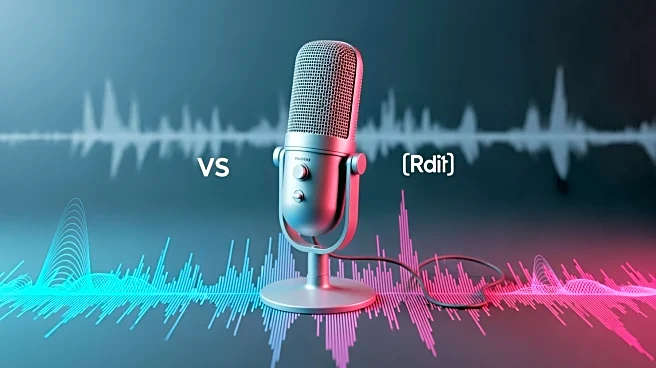What's Happening?
TikTok has announced a partnership with iHeartMedia to create the TikTok Podcast Network, which will feature up to 25 podcasts hosted by TikTok creators. These podcasts will be distributed by iHeartPodcasts
and available across major audio platforms. The collaboration also includes the launch of TikTok Radio, a digital radio station that will broadcast trending songs and commentary nationwide. This initiative aims to expand TikTok's reach beyond its app, offering creators new opportunities to engage with audiences through storytelling and entertainment.
Why It's Important?
The partnership between TikTok and iHeartMedia signifies a strategic expansion of TikTok's influence in the audio entertainment sector. By leveraging iHeartMedia's extensive network, TikTok creators can reach broader audiences, enhancing their visibility and potential for monetization. This move also reflects the growing trend of digital platforms diversifying their content offerings to include audio formats, which are increasingly popular among consumers. The collaboration could lead to new revenue streams for TikTok and its creators, while also strengthening iHeartMedia's position in the digital audio market.
What's Next?
The partnership is expected to lead to the opening of co-branded podcast studios in major cities like Los Angeles, New York, and Atlanta. Additionally, TikTok Radio will be integrated into iHeartMedia's flagship events, such as the iHeartRadio Music Festival. As the collaboration progresses, it may inspire other digital platforms to explore similar partnerships, potentially reshaping the landscape of digital and traditional media integration.
Beyond the Headlines
This development highlights the evolving nature of content creation and distribution, where platforms like TikTok are increasingly seen as cultural hubs. The partnership could influence how creators approach content production, encouraging them to explore multi-platform storytelling. It also raises questions about the future of traditional media and its adaptation to digital trends.













